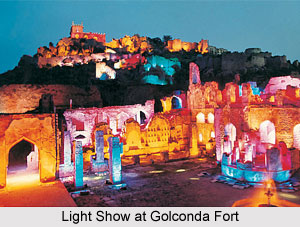 Ibrahim Adil Shah I was a ruler of the area of Bijapur, who had assumed the title of a `Shah` during the latter part of his regime. He was a successor of Mallu Adil Shah, who was his elder brother and was known to be the very first ruler of the dynasty of Adil Shah who ruled by the prestigious title of Shah. He reigned from 1534 till 1558.
Ibrahim Adil Shah I was a ruler of the area of Bijapur, who had assumed the title of a `Shah` during the latter part of his regime. He was a successor of Mallu Adil Shah, who was his elder brother and was known to be the very first ruler of the dynasty of Adil Shah who ruled by the prestigious title of Shah. He reigned from 1534 till 1558.
Rule of Ibrahim Adil Shah I
Ibrahim Adil Shah`s rule, which continued for 24 years, bore testimony to the numerable alliances, as well as counter alliances which enabled him to expand his dominions. Such counter alliances and alliances were established between the regions of Vijayanagar, Golconda, Berar, Bidar and Ahmednagar. Despite the innumerable political conquests, maximum expansion of territories was not possible since the victories in one battle used to be balanced by defeats in others. For this very reason, when Ibrahim Adil Shah I was capable of conquering Bidar, he lost the regions of Kalyani and Solapur to Ahmednagar. The southernmost boundary of the territory of Bijapur extended to the southern portion of Goa. Though Golconda was not surrendered to Ibrahim Adil Shah, the Golconda Fort was invaded by the army of Bijapur. Ibrahim`s anti-afaqi policies were responsible for the eventual weakening of his kingdom.
It is believed that the afaqi personnel who had been dismissed from the royal service of this ruler had later associated themselves with the emperors of the neighbouring kingdoms. However, Asad Khan Lari, the veteran leader who belonged to the afaqi faith was Ibrahim`s counsellor.
Ibrahim Adil Shah I introduced Sunni practices and eliminated the 12 names of the Imams who belonged to the Shiite faith. He brought about a transition in the religious traditions in his kingdom, as opposed to the policies of his ancestors and proclaimed several new political and religious laws. He abolished a majority of the Afaqi practises and instead incorporated Deccani and services in his kingdom. Consequently, the Marathas gained prominence in his court and several public documents began to be written in Marathi language.
Ibrahim was buried near the tomb of Hazrat Chandah Hussaini who was a renowned Sufi saint. It was the very same place where Isamail Adil Shah and Yusuf Adil Shah had been buried.



















